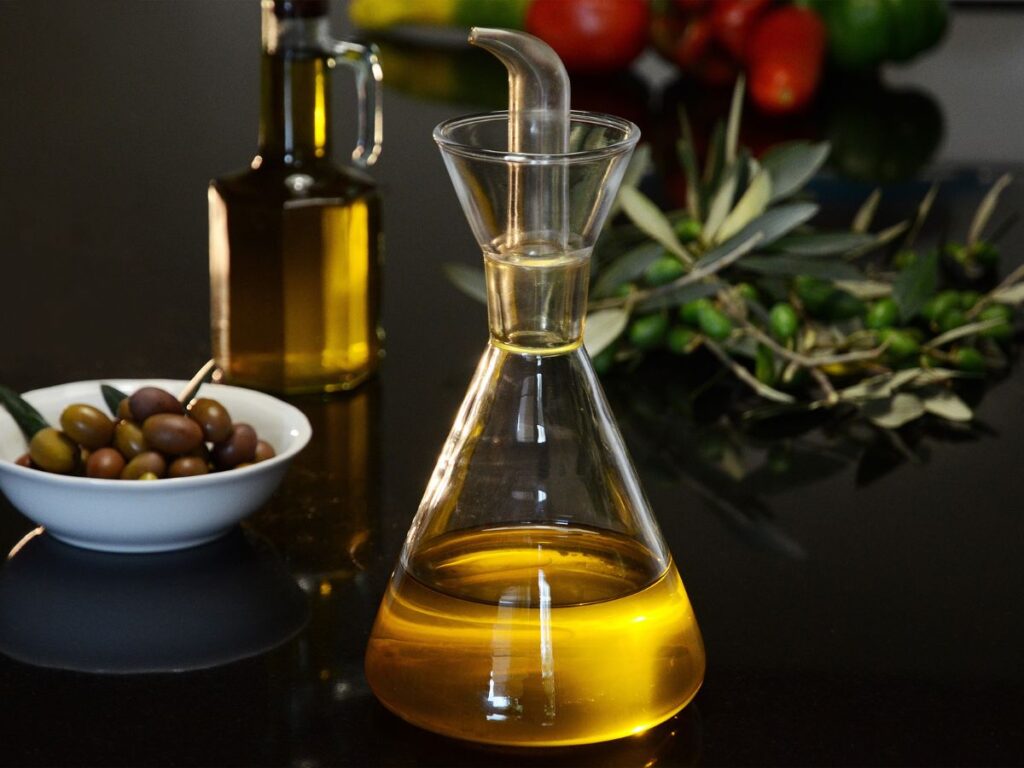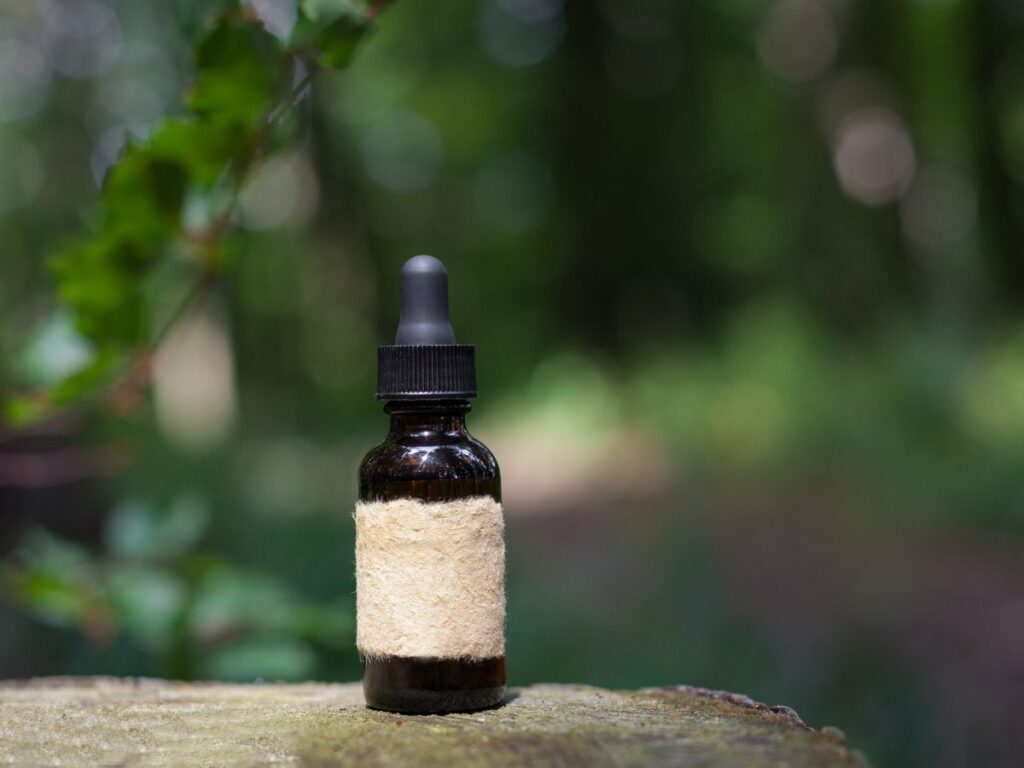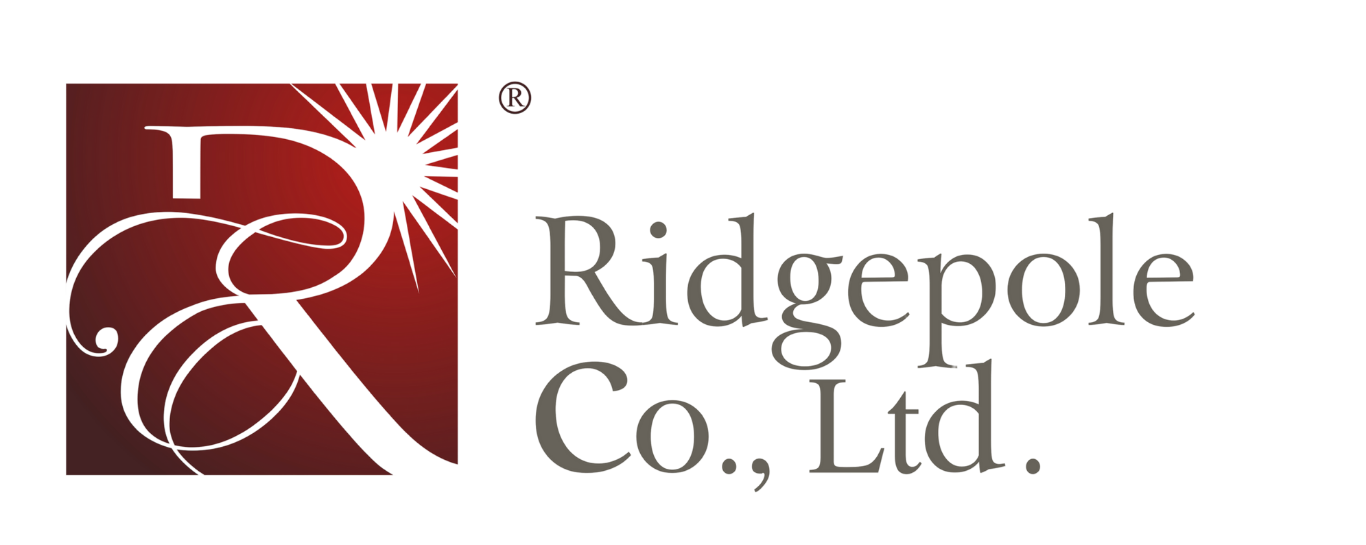How to Start a Beard Oil Company?

Author: Tommy Tang | Founder at Ridgepole
Hi, I'm Tommy Tang, here to share my expertise in skincare with you.
Table of Contents
Starting a beard oil brand sounds simple, mix some oils, slap on a label, and sell. But then reality hits. Which ingredients are best? Where do you buy in bulk? What about branding, packaging, and legal stuff?
I’ve worked behind the scenes with grooming brands, guiding them through these very questions. And I can tell you, there’s a right way to do it, and there’s a way that leads to wasted time and money.
In this article, I’ll give you the exact steps to create a beard oil business that stands out. You’ll learn everything from formulation to getting your first sale. No guesswork. Just a clear path forward.
Let’s get into it!
1. Introduction to the Beard Oil Business
Beard oil isn’t just a trend but a staple in men’s grooming. More men are investing in self-care, and a well-groomed beard is part of that routine. If you’re thinking about launching a beard oil brand, now is a great time.
Why? Because the market is growing fast.
According to market reports, the global men’s personal care market is projected to reach over $100 billion by 2028. That’s a huge opportunity for brands looking to enter this space.
What makes beard oil a smart business?
Starting a beard oil brand comes with several advantages:
- Low production costs: High-quality beard oils require just a few key ingredients.
- High profit margins: A single bottle can retail for 5-10 times the cost of production.
- Diverse sales channels: You can sell direct-to-consumer (DTC), wholesale, or even create private label products for other brands.
And the best part? You don’t need a massive budget to start. Many successful brands begin small, testing formulas and selling in niche markets before scaling up.
Is there room for new brands? Absolutely.
The market has plenty of big names, but there’s always demand for fresh options. Customers are looking for:
- Organic and natural formulations (free from synthetic additives).
- Specialized blends (for sensitive skin, thick beards, or different climates).
- Unique scents (beyond the standard sandalwood and cedarwood).
If you can offer something different, you have a real shot at success.
2. Research & Planning Your Beard Oil Brand
Before launching a beard oil brand, you need to know the market. Who’s buying? What’s selling? Where’s the demand?
More men want products that keep their beards soft, healthy, and well-groomed.
But competition is tough. Some brands sell premium, organic blends for $30+ a bottle, while budget-friendly options go for under $10. To stand out, you need to find a gap in the market.
- Are there enough vegan beard oils?
- Do men want unscented options for sensitive skin?
- Would a barbershop-exclusive brand work?
Look at what’s missing and position your product accordingly.
Defining Your Brand’s Unique Selling Proposition (USP)
Your USP is what makes your brand different. Without it, you’re just another bottle on the shelf.
Think about:
- Ingredients: Are you using organic oils? Cold-pressed?
- Scents: Woodsy, citrusy, fresh? A signature scent helps brand recognition.
- Target customers: Young professionals, rugged outdoorsmen, luxury shoppers?
- Branding: Minimalist? Vintage? Bold and edgy?
Who Are Your Customers?
Every detail shapes your brand identity. But even the best product won’t succeed if it’s not reaching the right people. Who are you selling to?
- Age: Young men (20s-30s) care about trends. Older men (40s+) focus on quality.
- Lifestyle: Professionals want polished grooming. Outdoorsmen need heavy-duty hydration.
- Shopping habits: Do they buy from Amazon, boutique shops, or barbershops?
Understanding your customer helps you create a product they actually want.
Now that you’ve mapped out your market and brand identity, it’s time to develop your formula.
3. Developing Your Beard Oil Formula
A great beard oil starts with the right formula. It needs to nourish the beard, hydrate the skin, and smell appealing without being overpowering.
But how do you create a product that customers will love? It all comes down to the ingredients.
Carrier Oils (Base Oils)
Carrier oils make up the majority of your formula. They determine how well the oil absorbs into the skin and hair.
Some of the most popular options include:
- Jojoba Oil – Closely mimics natural skin oils, absorbs quickly.
- Argan Oil – Rich in vitamins, great for softening coarse hair.
- Sweet Almond Oil – Lightweight, smooth, and non-greasy.
- Castor Oil – Thick and deeply hydrating, adds shine.
- Coconut Oil – Helps condition but can feel heavy.
💡 Tip: Choose 2-3 high-quality carrier oils to create a balanced formula.
Essential Oils (Fragrance & Benefits)
Essential oils add scent and additional skin benefits. The key is to find a balance, too much can be overwhelming. Popular choices include:
- Cedarwood – Warm, woodsy scent with antibacterial properties.
- Sandalwood – Classic, masculine, and calming.
- Tea Tree – Helps reduce beard itch and dandruff.
- Peppermint – Refreshing and stimulates hair growth.
- Eucalyptus – Provides a fresh, clean scent.
💡 Tip: Test different blends to find a signature scent that isn’t too strong.
Additional Ingredients (Optional)
Some ingredients add extra benefits to your beard oil.
- Vitamin E – Extends shelf life and promotes skin health.
- Aloe Vera – Soothes irritation and hydrates.
Now that you have your ingredients, how do you test your formula?
DIY Small-Batch Testing
If you’re starting small, test different blends yourself.
- Create sample batches.
- Try them on different beard types.
- Pay attention to absorption, thickness, and scent longevity.
This helps you refine your formula before production.
Hiring a Cosmetic Chemist
If you plan to scale, consider working with a professional.
A cosmetic chemist can:
- Make sure your formula is safe and stable over time.
- Help meet cosmetic regulations for different markets.
- Adjust ingredients for better performance.
💡 Tip: A stable formula prevents separation and keeps your product fresh longer.
With a solid formula in place, it’s time to think about manufacturing and sourcing your ingredients.

4. Manufacturing & Sourcing Beard Oil
Once you’ve developed the perfect formula, the next step is getting it made.
Private Label Beard Oil
Private labeling is the easiest way to enter the market. You work with a manufacturer that already produces beard oil and customize it with your branding.
✅ Pros:
- Faster production and market entry.
- No need to invest in expensive equipment.
- Manufacturers handle formulation, testing, and compliance.
❌ Cons:
- Less control over ingredients and scent.
- Minimum order quantities (MOQs) can be high.
💡 Tip: Choose a private label company that allows formula customization so you can stand out.
In-House Production
If you want full control over your product, in-house production might be the way to go. You source raw materials, mix the formula, and handle packaging yourself.
✅ Pros:
- Control over every ingredient.
- Ability to tweak formulas anytime.
- Lower cost per unit in the long run.
❌ Cons:
- Higher upfront costs for equipment and supplies.
- More time-consuming.
- Must meet regulatory requirements yourself.
If you’re serious about manufacturing in-house, start small with test batches before scaling.
No matter which production method you choose, you’ll need trustworthy suppliers.
Raw Material Suppliers
Look for vendors that provide:
- High-quality carrier oils (jojoba, argan, castor, etc.).
- Essential oils that meet cosmetic-grade standards.
- Bulk pricing for cost efficiency.
Packaging & Label Suppliers
Packaging matters. A great product won’t sell if it looks cheap. Consider:
- Glass bottles vs. plastic: Glass feels premium but is heavier.
- Dropper or pump caps: Dropper bottles offer precise application.
- Custom labels: Waterproof and oil-resistant options last longer.

5. Legal Requirements & Compliance
Selling beard oil isn’t just about great ingredients and branding. It must also meet legal requirements to be sold safely and legally. Every country has specific cosmetic regulations, and failing to comply can lead to fines or product recalls.
Let’s break down the key regulations and labeling requirements you need to know.
Cosmetic Regulations
FDA (USA)
In the United States, the Food and Drug Administration (FDA) regulates cosmetics, including beard oil. While the FDA doesn’t require product approval before sale, your beard oil must be:
- Safe for use when applied as directed.
- Properly labeled with clear ingredient information.
- Manufactured under sanitary conditions to prevent contamination.
💡 Tip: If your beard oil claims to promote hair growth or treat skin conditions, it may be classified as a drug instead of a cosmetic. This requires additional approval.
EU Cosmetic Regulation (Europe)
The European Union has stricter cosmetic laws than the U.S. All beard oils sold in the EU must comply with Regulation (EC) No 1223/2009, which includes:
- Ingredient safety checks: Some essential oils and preservatives are restricted.
- Product testing: Stability and microbiological tests may be required.
- Responsible Person (RP) designation: A person or company must be legally responsible for compliance.
- Cosmetic Product Notification Portal (CPNP) registration: Before selling, products must be listed in the CPNP database.
If you plan to sell in Europe, working with a compliance expert can save you time and trouble.
Other Country-Specific Guidelines
Each country has its own cosmetic regulations. For example:
- Canada: Must comply with Health Canada’s Cosmetic Regulations and be registered with the government.
- Australia: Beard oils are regulated under the Therapeutic Goods Administration (TGA) if they make therapeutic claims.
- China: Some cosmetics require animal testing for approval.
Labeling Requirements
Your beard oil label isn’t just about branding, it must include key details for legal compliance. Most countries require:
- Ingredient list: Using the International Nomenclature of Cosmetic Ingredients (INCI) format.
- Usage instructions: How and where to apply the product.
- Warnings: Example: “For external use only. Avoid contact with eyes.”
- Manufacturer details: Business name and contact information.
Staying compliant isn’t optional. It protects your business and builds customer trust. Before launching, consult a regulatory expert to make sure your product meets all legal requirements.
Branding & Packaging Your Beard Oil
Your product may be high quality, but branding and packaging are what attract customers first. A strong identity makes your beard oil memorable and helps it stand out in a competitive market.
Creating a Strong Brand Identity
Your brand is more than just a name. It’s how customers recognize and connect with your product.
Start with these key elements:
✅ Brand Name – Choose something that reflects your values. Do you want to sound rugged, sophisticated, or eco-friendly?
✅ Logo & Color Scheme – Colors and design should match your target market. A luxury brand might use black and gold, while an all-natural brand might lean on earthy tones.
✅ Brand Personality – Define how you communicate. Are you sleek and modern? Or bold and masculine?
💡 Tip: Align your branding with your ideal customer. A high-end beard oil should look premium, while a budget-friendly option should focus on accessibility.
6. Designing Your Packaging
Packaging is the first thing customers notice. It needs to look professional and match the product’s price point.
Bottle Choices
- Glass Bottles: Premium feel, eco-friendly, but heavier and breakable.
- Plastic Bottles:Lightweight, shatterproof, but may look less high-end.
Label Printing Options
- Matte or Gloss Finish: Gloss gives a sleek look, while matte feels more natural.
- Waterproof Labels: Important for preventing wear and tear.
Eco-Friendly Considerations
Sustainable packaging is a growing trend. Some options include:
- Recyclable glass bottles.
- Biodegradable labels.
- Minimal plastic use.

7. Pricing & Profitability
Once your branding and packaging are in place, you need to set your prices. The goal is to make a profit while staying competitive.
To price your beard oil correctly, break down your costs:
- Raw Materials – Oils, bottles, droppers, labels.
- Manufacturing Costs – Private label fees or in-house production expenses.
- Branding & Marketing – Logo design, website, ads.
After calculating these, decide on a profit margin that makes sense. Many beard oil brands mark up their product 5-10 times the production cost.
Retail pricing should be competitive with similar brands. Research what high-end, mid-range, and budget-friendly beard oils charge.
- Luxury brands may sell for $30+ per bottle.
- Mid-tier brands range from $$15$$25.
- Budget-friendly brands sell for $10 or less.
If you plan to sell wholesale to barbershops or retailers, expect to sell at 50% of your retail price so they can resell at a profit.
A strong brand and smart pricing will set your beard oil business up for success. Next, let’s look at where and how to sell your product.
8. Sales Channels & Distribution Strategy
Once your beard oil is ready, the next step is selling it. Choosing the right sales channels can determine how quickly your brand grows.
Selling Online (E-commerce & DTC)
Selling direct-to-consumer (DTC) allows you to keep full control over your brand and pricing.
Popular platforms for selling beard oil include:
- Shopify: Great for building a branded store. Easy to customize.
- Amazon: High traffic, but competitive. Requires strong branding and reviews.
- Etsy: Best for small-batch, handmade, or natural products.
- Your Own Website: Full control over branding, customer experience, and pricing.
Selling Through Salons & Barbershops
Barbershops are a perfect match for beard oil sales. Barbers recommend products directly to customers, making them strong sales partners.
Benefits of barbershop partnerships:
- Built-in customer trust, barbers know what works.
- Recurring orders if customers like the product.
- No need for direct online marketing.
Wholesale & Retail Partnerships
If you want to get into retail stores, you’ll need to pitch your product to buyers. Here’s the steps to get into wholesale:
- Develop a wholesale pricing sheet: Retailers expect at least 50% off retail price.
- Reach out to local stores first: Independent retailers are easier to work with than big chains.
- Offer promotional displays: Help stores showcase your brand.

9. Marketing Your Beard Oil Brand
A great product won’t sell itself. You need to market it effectively.
Creating a Strong Online Presence
Your website is your digital storefront. It should be easy to navigate, look professional, and rank well in search engines.
Ways to boost online visibility:
- SEO: Optimize your site with keywords like “best beard oil” to attract organic traffic.
- Blogging: Write beard care guides to establish authority and attract visitors.
- Email marketing: Offer discounts or free guides in exchange for emails.
Social Media & Influencer Marketing
Beard oil is a visual product, making social media a powerful tool. Here are the best platforms for marketing beard oil:
- Instagram: Showcase customer beards and before/after transformations.
- TikTok: Short, engaging videos of application tips and product benefits.
- YouTube: Longer videos on grooming routines and beard care.
Paid Advertising (PPC & Facebook Ads)
If you want immediate sales, consider paid advertising.
Where to run ads:
- Facebook & Instagram Ads: Target bearded men based on age and interests.
- Google Ads: Show up when people search for beard oil.
10. Scaling & Expanding Your Brand
Once your beard oil business is running smoothly, it’s time to think bigger. Expanding your brand can help you reach new customers, increase revenue, and stay competitive. Growth isn’t just about selling more—it’s about offering more value.
How do you scale your brand? Start by expanding your product line and exploring international markets.
Customers who use beard oil often need other grooming products. By offering complementary items, you can increase repeat purchases and create a stronger brand presence.
Popular product extensions include:
- Beard balms: Provides extra moisture and light hold. Ideal for longer beards.
- Mustache wax: Helps shape and style mustaches. A must-have for grooming enthusiasts.
- Beard shampoo: Cleanses facial hair without stripping natural oils.
Expanding beyond your local market opens huge opportunities. Many countries have growing demand for high-quality beard care.
Before selling internationally, research:
- Export regulations: Some countries have strict rules on cosmetic imports.
- Labeling requirements: Ingredients may need to be listed in multiple languages.
- Restricted ingredients: Certain essential oils may not be allowed in some regions.
Scaling takes time, but each step brings new opportunities. The key is to grow strategically while maintaining product quality and brand identity.
Conclusion
Starting a beard oil company may seem overwhelming, but now you have the roadmap. From choosing ingredients to scaling your brand, every step is laid out.
The market is growing. Customers are looking for quality products. The only thing left? Taking action.
So, what’s stopping you? Whatever you decide, don’t wait. Start now. Research suppliers, test formulas, and build a brand that stands out.
Need guidance? Contact us today! Let’s get your beard oil business off the ground.
Discover More Options
There’s more to explore! Check out our additional product selections to find exactly what you’re looking for:
Still haven’t found what you’re looking for? Don’t hesitate to contact us. We’re available around the clock to assist you.
Quick Quote
Own Your Private Label Cosmetic Line Is No Longer Difficult Here!





